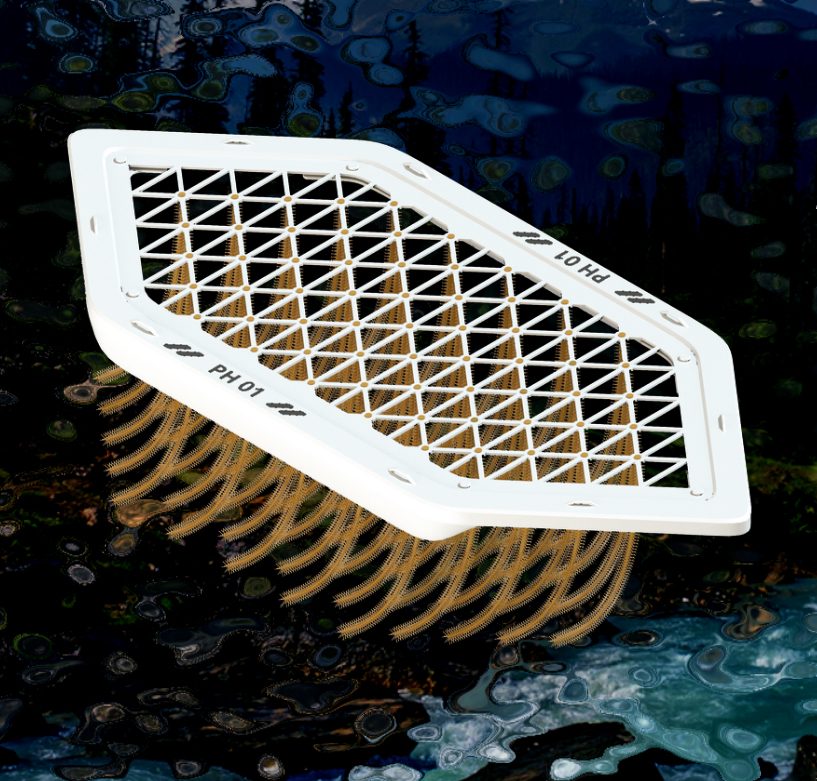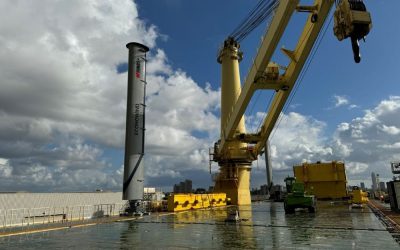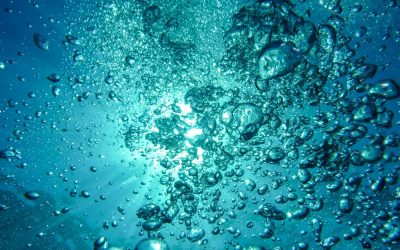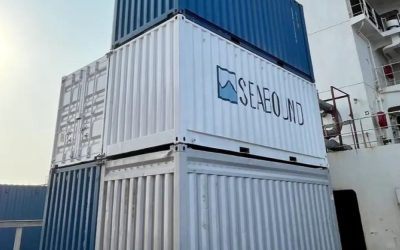Start-up PolyGone has developed a biomimetic, hydrophobic filter to remove typically hard-togather, sub-1mm microplastics from water – and recent trials are yielding encouraging results
Recent figures suggest that our oceans currently contain around 165 million tonnes of plastic. However, even if plastic production ceased tomorrow, existing plastics would continue to break down, leaving a growing number of small particles within our waterways, our marine life – and ourselves.
Worse, microplastics are dispersed, sometimes in hard-to-reach environments, as opposed to being consolidated in a landfill. So, tech company PolyGone, launched in 2021 by two alumni from Princeton University, US, is looking at ways to capture microplastics from water flows before they reach the sea. That’s a tall order, as most treatment systems aren’t effective at the sub-1mm scale, which includes waste such as fabric fibres. “These microplastics are near-invisible when they’re in water and the easiest to ingest, both for wildlife and humans,” says Nathaniel Banks, one of PolyGone’s founders.
PolyGone’s first step was to create a passive filter in a frame that can be scaled up in multiples – useful for aftaching to waste-water outlets and even autonomous clean-up vehicles. However, finding a suitable filter material was difficult. “The root structures of aquatic plants are very fibrous and can be used to sequester very small contaminants from the water column,” says Banks. Utilising real plants had issues, though: firstly, very polluted or extreme weather conditions would likely kill the plants, while anything tough enough to survive could be introducing an invasive species. Further, “organisms might want to nest or form habitats around the plants”, and cleaning could impact on their lifecycles.
PolyGone co-founder Yidian Liu describes how a biomimetic alternative was reached, using thin strands coiled around a wire to create “a very dense fibrous structure similar to a plant’s roots”. While initial results were positive, though, the first field trials were hampered by biofilm build-up – so the team took another look at materials with inherent microbial inhibition characteristics.
Effective filter
Some forms of silicon appear to hold the answer. PolyGone is now working on innovative, proprietary silicons for the brush: “The solution we have developed is very hydrophobic,” says Banks. “Since microplastics are also hydrophobic, they aftract and stick to one another when in water.”
This new version is looking promising: lab tests showed that 72% of microplastics between 0.1-0.5mm were captured in a 24-hour test using fluorescent plastic beads. While counting usually involves a torch or imaging technologies, “our filter collected so much that we could actually just weigh the amount we were picking up from our flow tank”, says Liu.
At the time of writing, a small-scale field test of the optimised filter is being conducted on a water treatment effluent stream, with results expected soon. PolyGone is also about to commence far larger trials: one will be dealing with a 5m-wide outlet of previously treated water from a municipal plant, a trial requiring more than 260 filter modules. These, in turn, will need automatic, daily cleaning: one can’t simply hose down the filters over a drain. “This will be the first full-scale validation test of our technology in an industrial setting,” says Banks.
There are other applications: for example, a marinacleaning company is interested in incorporating the technology into its autonomous robotic units. There is even a research group investigating microplastics’ lifecycles within an experimental lake: the idea being to use the filters as a monitoring and remediation tool (usefully, this will also give PolyGone exact data on its efficacy in a reservoir environment).
However, there remains the issue of what to do with the waste that’s been picked up. “You can’t just burn it or store it forever,” points out Banks. “So, we’re in partnership with a team in the University of Washington in St Louis who are developing a microplastic-digesting enzyme.”
It’s a fortuitous match. Banks continues: “They have an enzyme that works in the lab, but they don’t have many real-world samples to test it on, so they’re very happy to collect any microplastic particles we capture to see how well it can digest them.”






